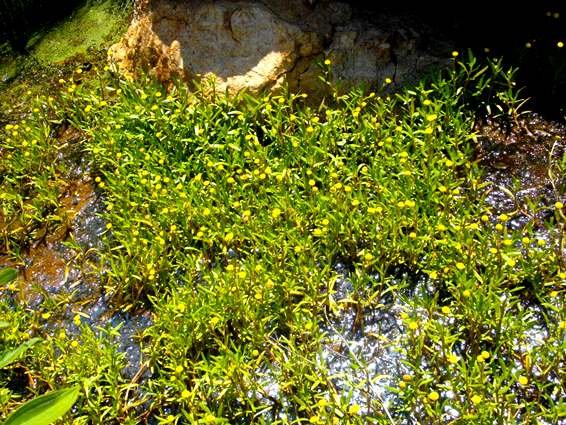Cotula coronopifolia

Cotula coronopifolia, commonly known as brass buttons and in Afrikaans as gansgras (goose grass), is an erect or trailing annual reaching heights from 20 cm to 35 cm. When trailing, the stems root, also under water.
The hairless plant grows alternate, fleshy leaves that clasp the stems and vary in size and shape. The about linear leaves are sometimes lobed and have finely toothed margins. They become 15 mm long and 5 mm wide.
The compact yellow flowerheads are button-like, consisting of disc florets only, borne on long, slender peduncles. A flowerhead becomes 10 mm in diameter. Flowering happens almost throughout the year, in some places peaking around spring.
The species is widely distributed, mainly in the west and south of the country: the Western Cape, Eastern Cape, Northern Cape, Free State and Gauteng.
The habitat is moist places near streams, vleis and flood plains, the water where they grow sometimes brackish. The species is not considered to be threatened in its habitat early in the twenty first century.
Geese are said to eat the plant, but it is not palatable to other stock.
The plant has been introduced in Australia and Argentina (Vlok and Schutte-Vlok, 2015; Shearing and Van Heerden, 2008; Le Roux, et al, 2005; Moriarty, 1997; http://redlist.sanbi.org).

